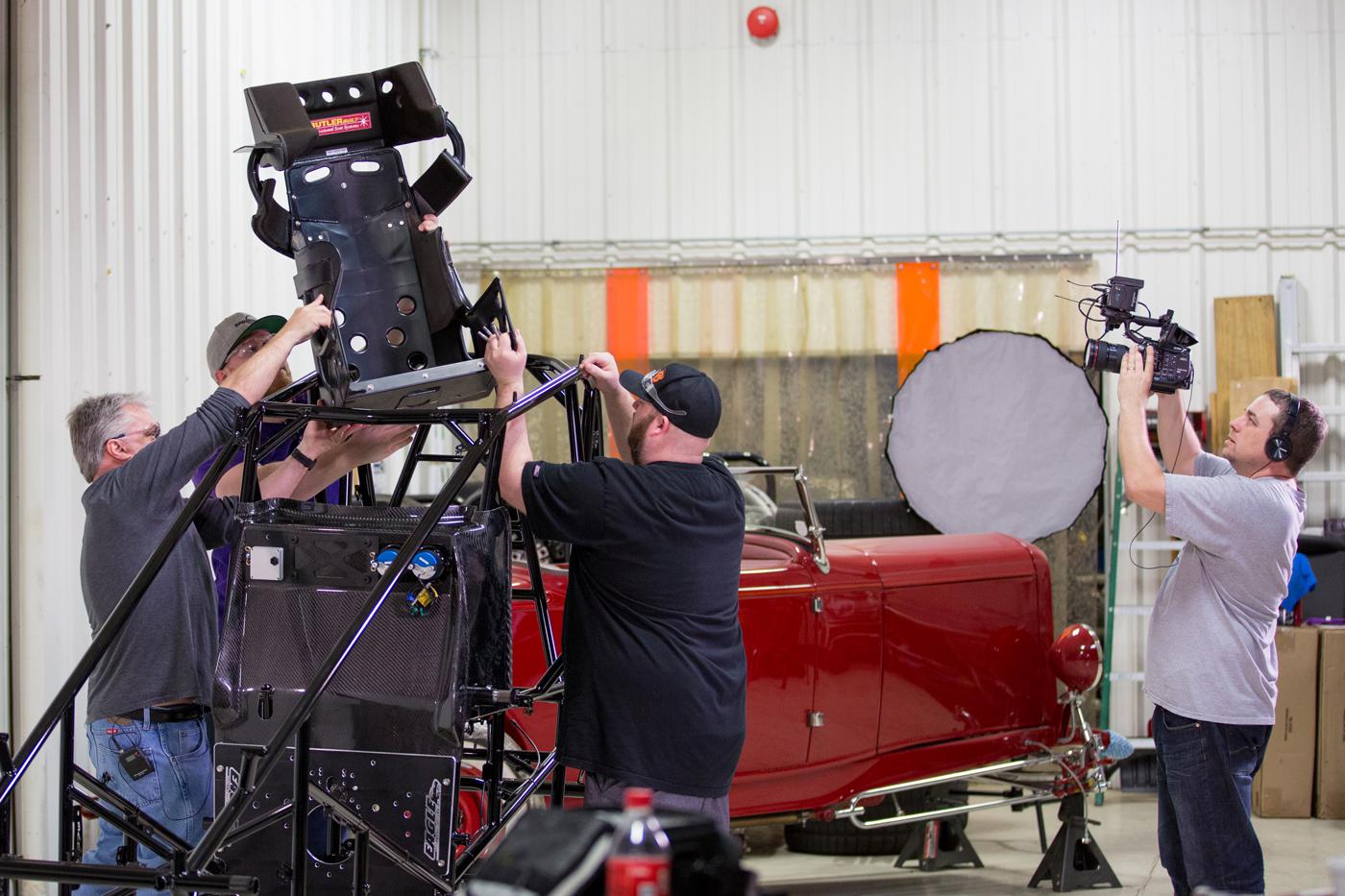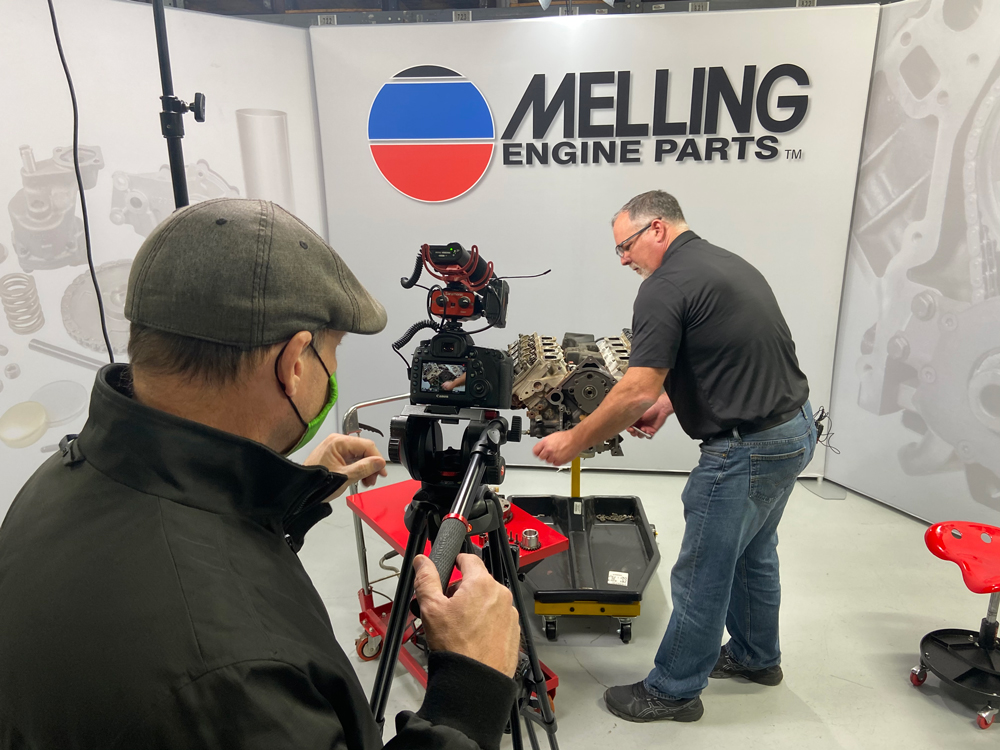Ask the Experts: Tech Videos

At Speedway Motors, video content ideas come from “common customer requests or issues, projects our employees are working on, and many other sources,” noted a company contact.
Improve your online resources with technical content that can provide essential training and answer FAQs.
Why is technical-based video content becoming more important to the performance racing industry? It has to do with a fundamental shift in how we process information.
“As a society, we have transitioned from wanting to read about stuff to wanting to watch stuff,” said Ted Hughes of MAHLE Aftermarket, Farmington Hills, Michigan. “It’s not about training articles anymore, it’s, ‘I want to watch a video on how to do it.’”
Hughes said the target audience for MAHLE’s videos are its technicians, whose median age is in the mid to late 40s. “That means half the people are in their early 40s and in their 20s and 30s. They haven’t picked up a printed magazine or newspaper in years. If we want our message to get to them, we have to reach them digitally.”
To that end, MAHLE has created a video studio at its Farmington Hills headquarters and recently launched the MAHLE Video Warehouse (videos.mahle-aftermarket.com) as a portal for all its video content.
Melling Performance in Jackson, Michigan, aims to reach a wide swath of its customers with its videos, according to Eric Smith. “Direct customers, shade-tree mechanics, racers, and do-it-yourselfers all appreciate the help and advice in the tech videos,” he said.
Retailers, too, recognize the benefits. “A customer browsing our website can find videos that outline product details more in-depth, answer questions about a product, or explain common issues,” said Katie Bennett of Speedway Motors, Lincoln, Nebraska. “All of this leads to reduced customer issues and improved experiences with our company.”
For tips on how these experts produce technical videos that engage and inform their customers, read on.
Q: Where do the ideas for videos come from?
“Understanding the need for increased remote education and distance training options, we identified 25 to 50 topical videos that came from our sales team that interfaces with customers—the things they needed to help them do their jobs, or things their customers were asking for,” said Hughes. “We also get feedback through our website and social media. If we get a couple questions about a particular topic, that means there’s more people out there running into the same thing. That’s a trigger for us to get onto a video about that subject.”
Melling, too, looks for “a common theme of tech or install questions” from its technical department, said Smith. “That helps determine that it would be helpful to put out a how-to video on a specific part-number installation, or a more general tech tip on how to do a procedure when building engines.”
For Speedway Motors, determining video content “is a collaboration across the entire company,” said Bennett. “Our marketing team works closely with our merchandising, customer experience, e-commerce teams and many others to identify the need for technical videos. Content ideas come from common customer requests or issues, projects our employees are working on, and many other sources.”

Q: How do you decide who’s responsible for and participates in the videos?
“Speedway Motors is fortunate to have many in-house experts with technical knowledge in a variety of areas,” Bennett said. “Our employees are in their own garages working on projects or racing on the weekends. We lean on all our experts to provide insight and expertise. We also have a team dedicated to content creation that works alongside these experts to produce videos.”
For MAHLE, the video’s content determines the parties involved. “On the tool and equipment side of our business—to train someone who buys an air-conditioning service machine, for example—that video would be done by one of the engineers or product specialists, so they can speak with confidence and have an air of credibility,” Hughes said.
“Other types of videos, like our tech-tip training videos, are done with Tim Golema, our senior manager of training,” Hughes added. “In pre-pandemic times, he would spend 45 to 48 weeks a year on the road teaching technicians in the field. That changed dramatically last year, so we equipped his office in Chicago with a green screen and a ring light” so he could continue his training sessions via video.
Q: What were some problems, and solutions, you worked through making these videos?
“Not every expert with technical knowledge is comfortable delivering that information through video,” Bennett said. “We had to develop coaching and other techniques to help our experts deliver the best information possible.”
MAHLE has learned that the style of the video “has to suit what the audience is looking for, or you’re not going to have the credibility you need,” Hughes said. “Know your audience. If we’re reaching out to distributors or people who work in an office, they like a video with more professional polish. But in most cases, we’re trying to get technical content delivered to people who get their hands dirty for a living. They don’t want some suit in front of a camera telling them how to do their job. They want a guy in a shop shirt saying, ‘This is what I encountered, and this is how you can avoid it.’”
SOURCES
–
MAHLE Aftermarket
mahle-aftermarket.com
Melling Performance
melling.com
Speedway Motors
speedwaymotors.com
 MEMBERSHIP LOGIN
MEMBERSHIP LOGIN JOIN PRI
JOIN PRI


